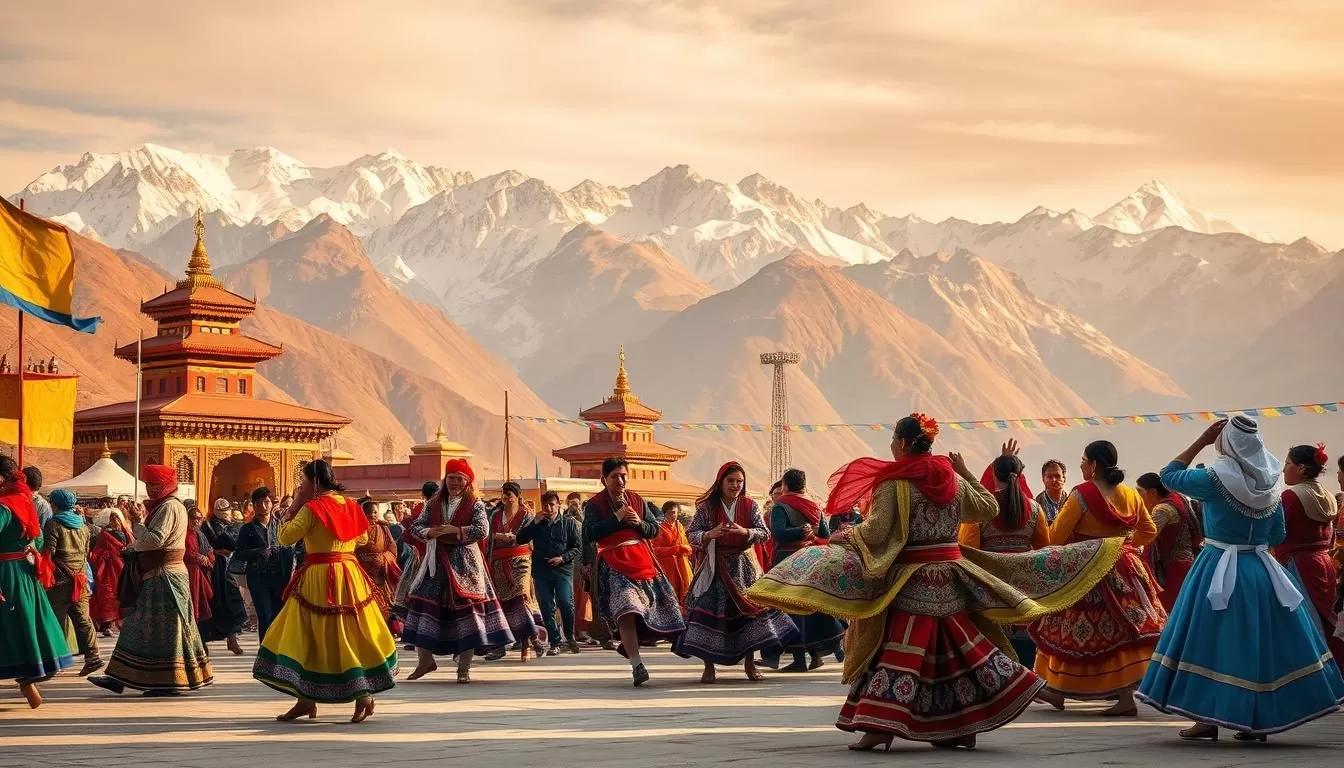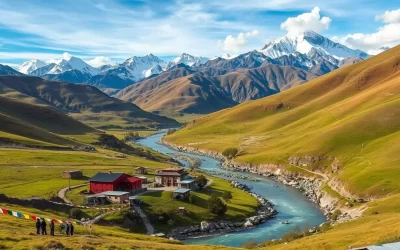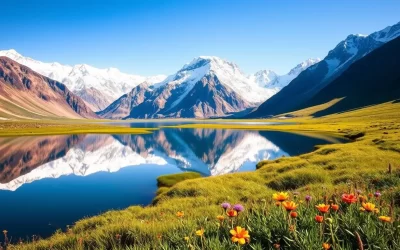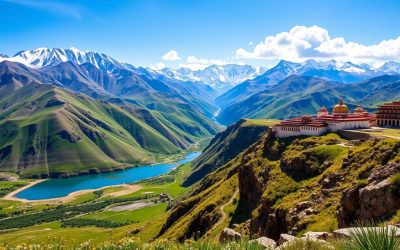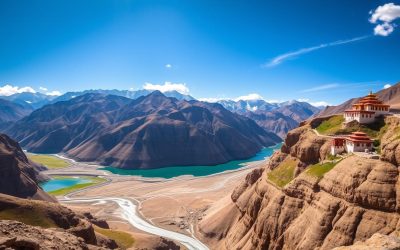✓ Accommodations✓ Flights✓ Rental Cars
Are you ready to experience the vibrant culture of Ladakh? This breathtaking Himalayan region hosts numerous festivals throughout the year, showcasing its rich Buddhist traditions and cultural heritage. With over 55 events scheduled for 2025-2026, you’ll have ample opportunities to immerse yourself in the local culture.
Visiting Ladakh during these festivals can transform your experience from merely scenic to deeply immersive and culturally enriching. You’ll get to witness the region’s unique blend of ancient traditions and seasonal celebrations, making your trip truly unforgettable.
The festivals in this region serve as windows into the Ladakhi identity, shaped by centuries of Buddhist traditions. By understanding and experiencing these events, you’ll gain a deeper appreciation for the local culture and its significance.
The Cultural Significance of Festivals in Ladakh
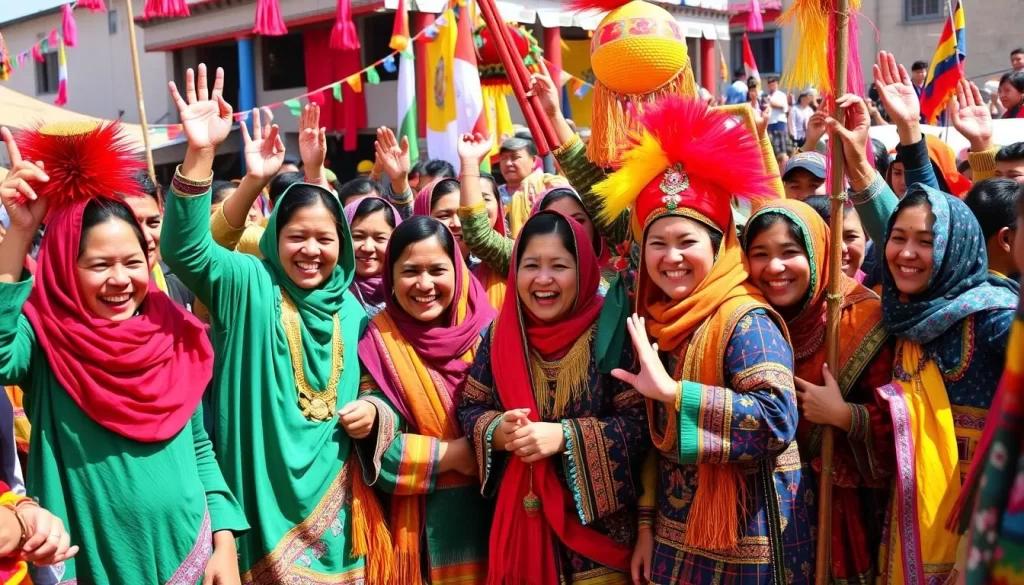
In Ladakh, festivals are an integral part of the cultural fabric, weaving together community, tradition, and spirituality. The region’s unique cultural identity is reflected in its vibrant festivals, which are deeply rooted in Tibetan Buddhism.
Monastic festivals are a significant aspect of Ladakhi culture, with most celebrations revolving around important Buddhist figures, teachings, and monastic rituals. These festivals serve as living museums of cultural heritage, preserving ancient traditions that date back centuries.
The Role of Buddhism in Ladakhi Celebrations
Tibetan Buddhism plays a central role in shaping Ladakhi festival traditions. The monks perform sacred rituals, believed to bring blessings, ward off evil spirits, and ensure prosperity for the coming season. These rituals are an integral part of the festivals, which are typically held in the monasteries (gompas) that dot the Ladakhi landscape.
Seasonal Festival Calendar of Ladakh
The traditional Ladakhi festival calendar follows the Tibetan lunar calendar, creating a unique rhythm to life that differs from the Western calendar system. The festivals help locals track seasonal changes in this harsh mountain environment, originally serving practical purposes beyond religious observance.
By attending these festivals, you can experience the rich cultural heritage of Ladakh, with its vibrant music, dance, and traditional attire. The festivals bring communities together, strengthening social bonds and providing opportunities for cultural expression.
Winter Festivals: Celebrating in the Snow-Covered Landscape
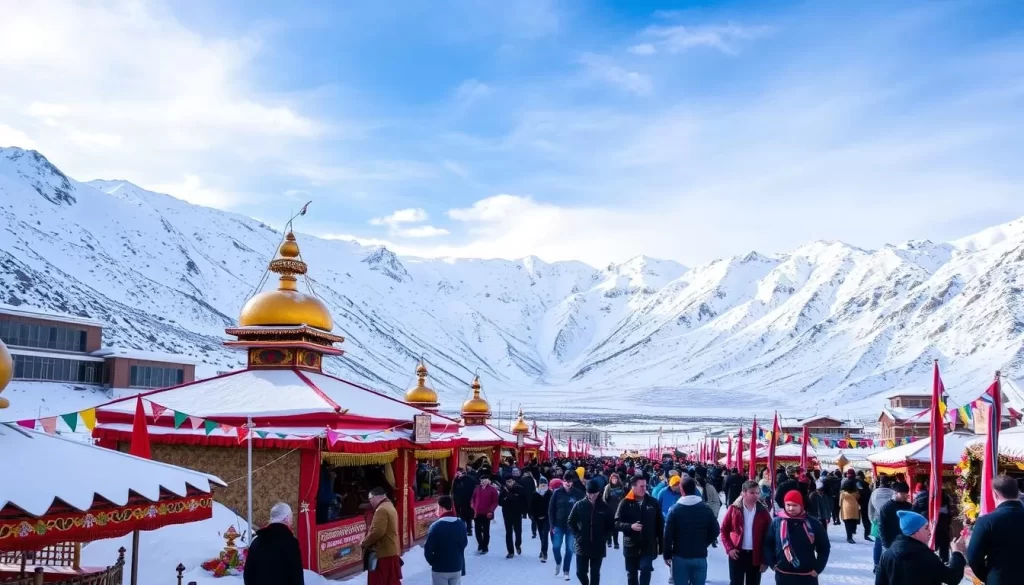
Winter in Ladakh is not just a season; it’s a time when the community comes together to celebrate significant festivals that are deeply rooted in tradition. The snow-covered landscapes, frozen lakes, and clear skies provide a serene and majestic backdrop for these celebrations.
Losar Festival: Ladakhi New Year Celebrations
The Losar Festival, or the Ladakhi New Year, is a cherished celebration that spans 15 days, with the first three days being the most significant. It’s a time for special prayers, family gatherings, and traditional foods that symbolize prosperity. You can experience the unique customs of Losar, including the preparation of special dishes like guthuk (dumpling soup) and khapse (fried cookies), and the ritual cleansing of homes to welcome the new year with purity.
Dosmochey: The Festival of the Ritual Cake
Dosmochey is a unique festival where monks from various monasteries gather at the Leh Palace to perform sacred dances and create elaborate tormas (ritual cakes) believed to capture negative energies. This celebrations is a significant event that showcases the rich monastic traditions of Ladakh.
Spituk Gustor: The Black Hat Dance
The Spituk Gustor festival features the dramatic Black Hat Dance, which reenacts the assassination of the anti-Buddhist Tibetan king Lang Darma by a Buddhist monk. This dance symbolizes the triumph of dharma over evil forces, highlighting the victory of good over evil.
These winter festivals not only serve religious purposes but also provide communities with social gatherings during the harsh winter months. You can witness the vibrant colors and joyous celebrations that bring warmth to the snow-covered landscapes, creating a striking visual contrast.
Spring Festivals: Welcoming the Warmer Season
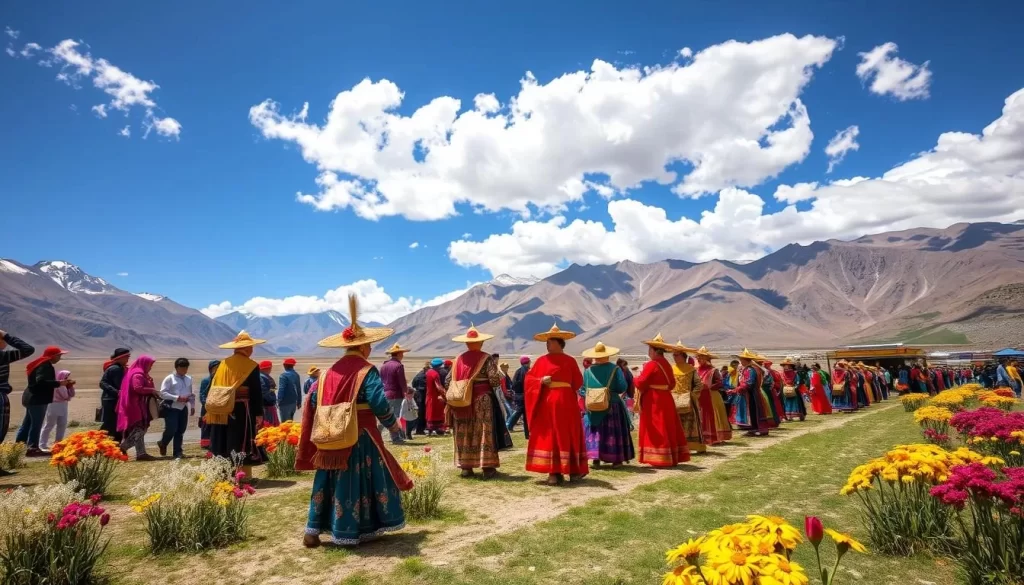
Spring in Ladakh is a time of renewal, marked by a series of festivals that blend spiritual practices with the practical concerns of the upcoming growing season. As the harsh winter begins to subside, the region awakens to a vibrant cultural scene, rich in tradition and natural beauty.
Stok Guru Tsechu: The Oracle Festival
Stok Guru Tsechu is a significant festival celebrated at the Stok Royal Palace on the 9th and 10th of the first month of the Tibetan lunar calendar. During this festival, two powerful oracles, accompanied by two laymen as their conduits, enter trance states to perform rituals, offering prophetic advice to believers seeking guidance.
Matho Nagrang: The Festival of Oracles
Matho Nagrang, celebrated on the 14th and 15th of the first month of the Tibetan lunar calendar, is renowned for its oracles known as Rongtsans. These monk oracles undergo months of isolation and meditation before performing astonishing acts, such as running on monastery roof parapets and cutting themselves with swords, at Matho Monastery.
Shey Doo Lhoo: Marking the Sowing Season
Shey Doo Lhoo is a festival that marks the onset of the sowing season, celebrated at Shey Monastery. Monks from Hemis Monastery gather to pray and bless the villagers for a good harvest, highlighting the deep connection between religious practices and agricultural cycles in Ladakh. This festival takes place with traditional music and elaborate costumes, adding to the vibrant cultural spectacle.
These spring festivals in Ladakh not only reflect the region’s rich cultural heritage but also underscore the importance of the changing seasons. By blending spirituality with practical concerns, they offer a unique insight into the lives of the Ladakhi people and their deep connection with the land.
Summer Festivals: Peak Season Celebrations
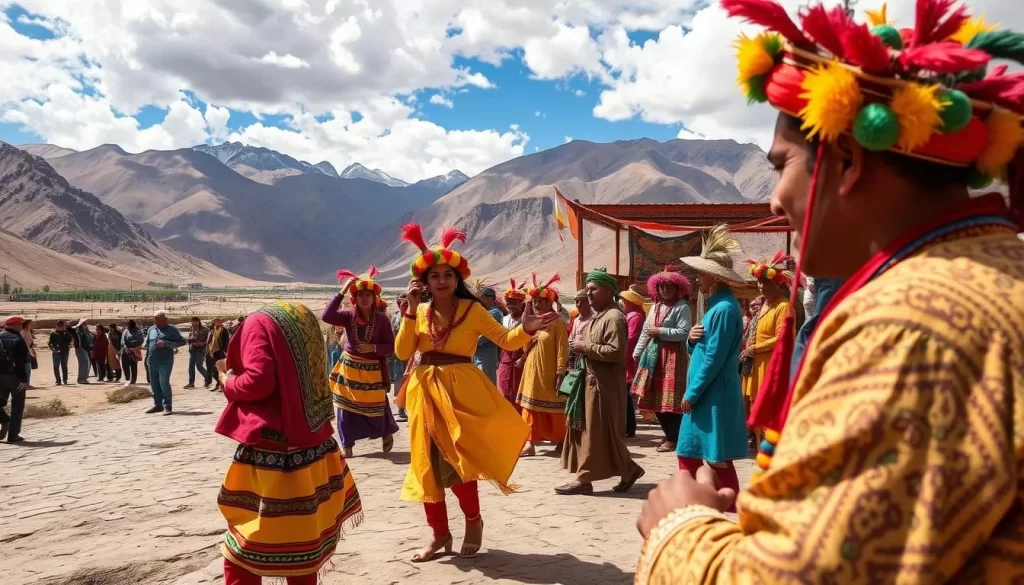
As the snow melts and the weather warms up, Ladakh comes alive with vibrant summer festivals that showcase the region’s rich cultural heritage. These festivals coincide with the peak tourist season, making it an ideal time to experience Ladakhi culture.
Hemis Tsechu: Honoring Guru Padmasambhava
Hemis Tsechu is a colorful two-day festival held at Hemis Monastery, celebrating the birth anniversary of Guru Padmasambhava, the founder of Nyingma, the oldest order of Tibetan Buddhism. The festival features elaborate mask dances representing his eight manifestations.
One of the highlights of Hemis Tsechu is the display of a spectacular 22-foot silk thangka of Guru Padmasambhava, an intricate artwork that’s only revealed during this special occasion.
Yuru Kabgyat: The Moonland Festival
Yuru Kabgyat takes place on the 18th and 19th of the fifth month at Lamayuru Monastery, set against the otherworldly “moonland” landscape of white limestone mountains. The festival honors both Guru Padmasambhava and the Buddhist lord of death through sacred dances.
This unique festival is a rare opportunity to witness the rich cultural heritage of Ladakh, surrounded by breathtaking natural beauty.
Saka Dawa: Buddha’s Enlightenment
Saka Dawa is a holy month that commemorates Buddha’s birth, enlightenment, and parinirvana. During this time, Buddhists engage in virtuous activities like charity, vegetarianism, and pilgrimage to accumulate merit.
The festival culminates in a spectacular day-long procession of Buddha’s statue and dharma scriptures through Leh, a colorful parade that draws both locals and visitors.
These summer festivals provide a unique opportunity for travelers to experience Ladakhi culture at its most accessible time, when mountain passes are open and accommodations readily available.
Ladakh (UT), India: Top Festivals to Check Out When Visiting
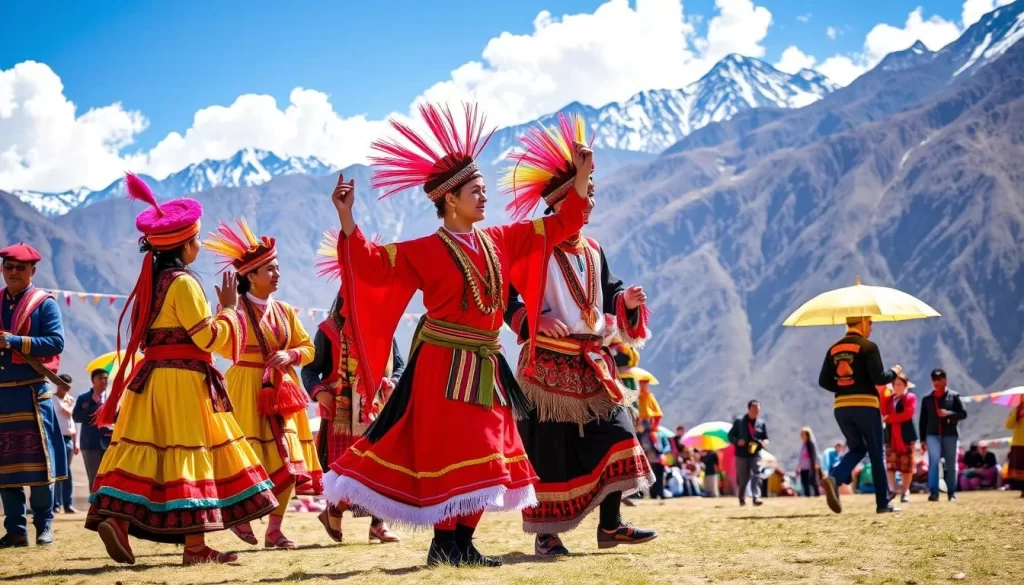
As you plan your trip to Ladakh, make sure to check out the top festivals that showcase the region’s vibrant culture and spiritual essence. Ladakh is home to numerous festivals that are celebrated with great fervor and enthusiasm, reflecting the region’s rich cultural heritage.
Phyang Tsedup: Victory of Good Over Evil
Phyang Tsedup, celebrated on the 2nd and 3rd of the sixth month of the Tibetan calendar, is dedicated to Skyoba Jigten Gombo, the founder of the Drikungpa lineage. This festival illustrates the triumph of good over evil through ritual offerings and the symbolic burning of effigies.
Takthok Tsechu: The Cave Monastery Festival
Takthok Tsechu is observed on the 10th and 11th of the sixth month of the Tibetan lunar calendar. During this festival, monks perform the ‘Guru Tsengyat Cham’, depicting the eight manifestations of Guru Padmasambhava. This sacred dance is a highlight of the festival, showcasing the spiritual significance of the occasion.
Karsha Gustor: Zanskar’s Largest Monastic Festival
The Karsha Gustor Festival, held at the Karsha Monastery in Zanskar, symbolizes the triumph of good over evil. This significant monastic festival typically takes place during the summer season and features the Black Hat dance and other sacred rituals performed by monks.
These festivals not only provide a glimpse into Ladakh’s rich cultural tapestry but also offer a chance to experience the region’s spiritual traditions firsthand. By attending these festivals, you can gain a deeper understanding of the local culture and its significance.
Autumn Festivals: Harvest and Cultural Celebrations
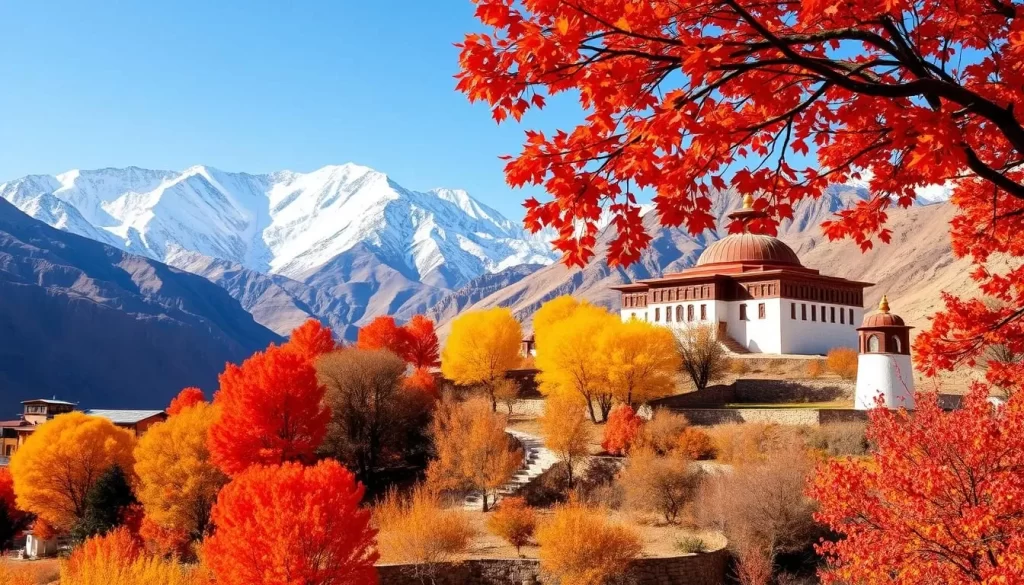
The onset of autumn in Ladakh brings with it a flurry of festivals that celebrate the harvest and the region’s unique cultural identity. As the landscape transforms into a kaleidoscope of colors, the community comes together to honor their traditions and the bounty of the harvest season.
Ladakh Festival: A Cultural Extravaganza
The Ladakh Festival is a four-day cultural extravaganza held in September in Leh town, showcasing the diversity of Ladakhi traditions through folk dances, music, and traditional sports like polo and archery. Visitors can also witness exhibitions of thangkas and handicrafts, offering a glimpse into the region’s rich cultural heritage. During the festival, you can sample local delicacies and Chang, a traditional barley beer, which is particularly abundant during the harvest season.
Diskit Gustor: Nubra Valley’s Spiritual Gathering
Diskit Gustor, held on the 28th and 29th of the ninth month of the Tibetan lunar calendar at Diskit Monastery in Nubra Valley, is a significant spiritual gathering. The monastery, famous for its towering Maitreya Buddha statue, hosts monks performing sacred dances to bring blessings to the community. This festival is a unique opportunity to experience the spiritual essence of Ladakh.
Thiksey Gustor: The Mini Potala Festival
Thiksey Gustor takes place on the 18th and 19th of the ninth month at Thiksey Monastery, known as the ‘Mini Potala’. The festival showcases the Black Hat dance and the ritual of throwing away a dho (effigy), performed against the backdrop of one of Ladakh’s most photogenic monastic complexes. The vibrant colors of autumn provide a stunning setting for this spiritual and cultural celebration.
These autumn festivals in Ladakh not only celebrate the harvest but also serve as a reminder of the region’s rich cultural heritage and its people’s strong connection with their traditions. As you experience these festivals, you will be immersed in the vibrant culture and spirituality of Ladakh.
Sacred Mask Dances: The Heart of Monastic Festivals
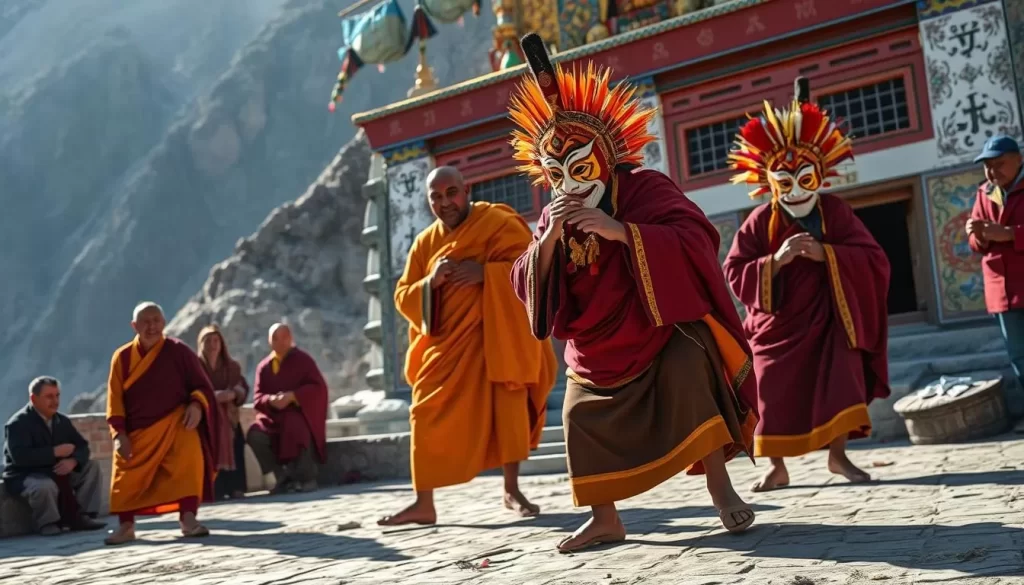
The sacred mask dances, known as Cham, are a pivotal part of Ladakh’s monastic festivals, embodying the region’s rich spiritual heritage. These dances are not mere performances but spiritual practices that monks train for extensively, with choreography passed down through generations and based on ancient Buddhist texts.
The Symbolism Behind the Cham Dance
The Cham dances are replete with symbolism, representing cosmic forces, the triumph of enlightenment over ignorance, and the journey toward liberation. Each movement and gesture is imbued with profound meaning, making these dances a form of moving meditation.
The Colorful Masks and Their Meanings
The elaborate masks worn during the dances represent specific deities, protectors, or demons from the Buddhist pantheon. Adorned in silk brocade, the performers bring these characters to life, accompanied by traditional music played on instruments like drums and cymbals. The festival atmosphere is electric, with the monks embodying the spiritual entities they represent.
As you witness these sacred performances, remember that they are part of a festival that deserves respectful attention. The festival is a celebration of Ladakh’s rich cultural heritage, with the sacred mask dances at its heart.
Planning Your Visit Around Ladakh’s Festivals
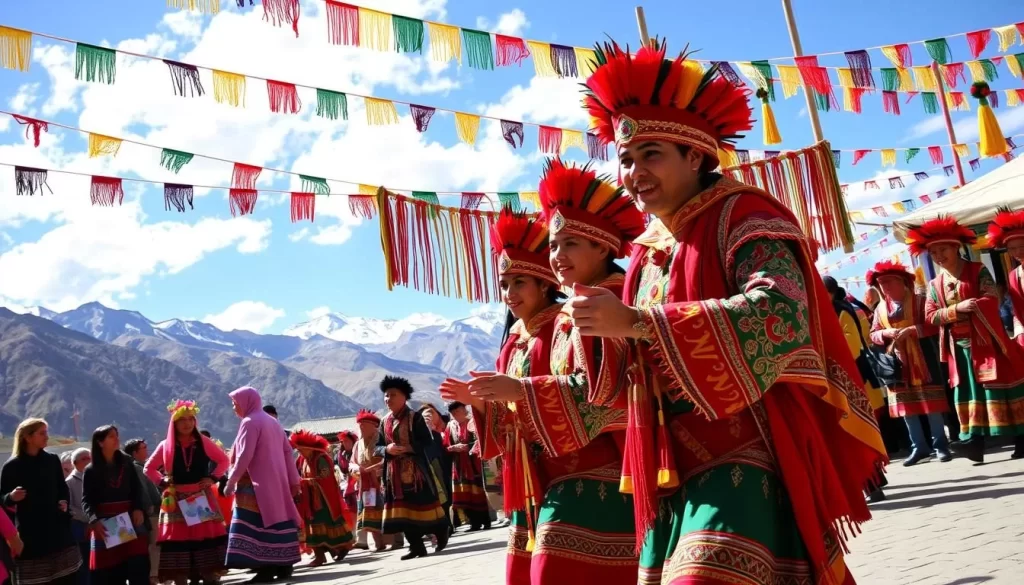
To experience Ladakh’s rich cultural heritage, timing your visit with its festivals is crucial. Ladakh hosts numerous festivals throughout the year, with over 55 events scheduled for 2025-2026. The festivals follow the Tibetan lunar calendar, which differs from the Western calendar system.
Festival Calendar and Seasonal Considerations
The Tibetan lunar calendar dictates the timing of Ladakh’s festivals, which can shift slightly each year relative to the Western calendar. It’s essential to plan your trip according to this calendar to catch the festivals you’re interested in. The peak tourist season coincides with summer when the region is most accessible and the weather is most pleasant.
Accommodation and Transportation Tips During Festival Season
During festival times, accommodations can be limited, especially in smaller villages where major festivals take place. It’s advisable to book your accommodations months in advance, especially for major celebrations like Hemis Tsechu. Understanding transportation logistics is also crucial, as festival venues may be located in remote monasteries requiring special arrangements or early departures from main towns.
By planning strategically and considering both festival dates and seasonal accessibility, you can have a fulfilling experience in Ladakh. Whether you’re attending a winter festival or a summer celebration, being prepared for the high-altitude conditions and limited transportation options during certain times of the year is key.
Etiquette and Tips for Attending Ladakhi Festivals
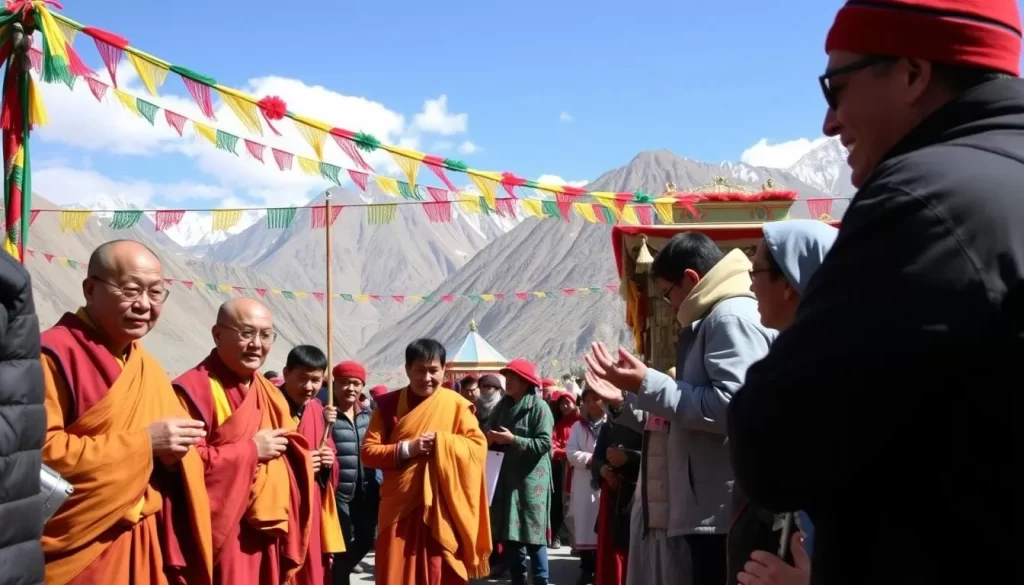
The spiritual and holy atmosphere of Ladakhi festivals demands respect from visitors. To ensure a meaningful experience, follow local guidelines and customs.
When attending a Ladakhi festival, dress modestly, covering your shoulders and knees. Be mindful of photography restrictions during certain rituals. Position yourself thoughtfully during performances, avoiding obstructing the view of local attendees.
- Approach Ladakhi festivals with respect and cultural sensitivity.
- Dress appropriately for festival attendance.
- Learn basic photography etiquette for festivals.
- Observe silence during prayers and important rituals.
- Consider making a small donation to the monastery hosting the festival.
- Engage respectfully with monks and local attendees if invited to do so.
By being respectful and considerate, you can have a positive and enriching experience at a Ladakhi festival throughout the day.
Lesser-Known Festivals Worth Experiencing
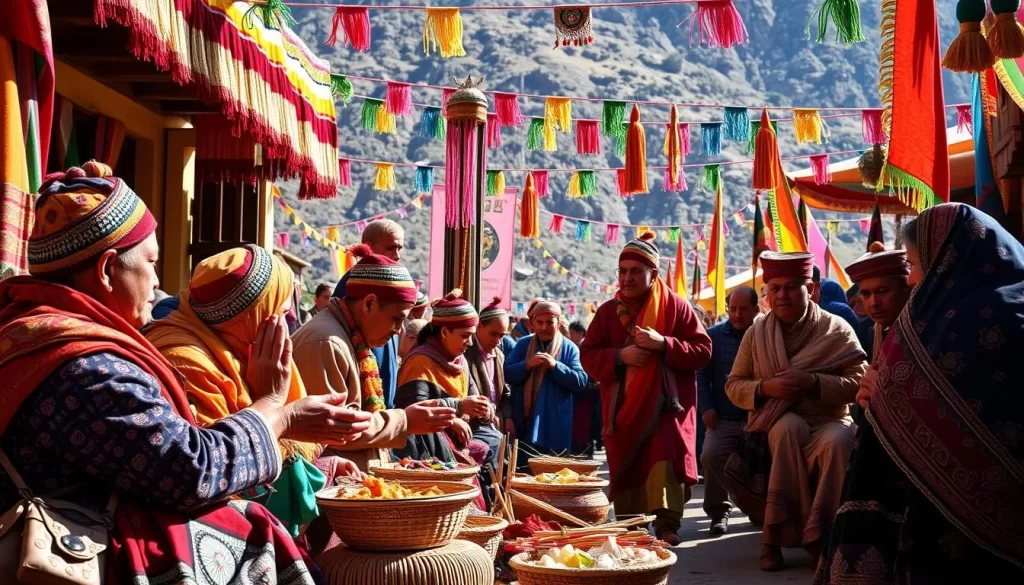
Ladakh’s lesser-known festivals provide a unique opportunity to experience the region’s culture and traditions without the crowds. You can discover hidden gems in Ladakh’s festival calendar that offer authentic cultural experiences.
One such festival is the Sindhu Darshan, celebrated at the banks of the sacred Indus River, bringing together people from diverse backgrounds to celebrate India’s cultural heritage. You can also experience the breathtaking beauty of the Apricot Blossom Festival, which marks the arrival of spring and the region’s famous apricot cultivation.
Other unique festivals include the Ladakh Astro Festival, which leverages the region’s clear skies for stargazing, and the Buckwheat Festival in the Sham Valley, celebrating traditional agriculture. You can also explore regional celebrations like the Balti Festival in Turtuk or the Aryan Festival in Darchik, showcasing the cultural diversity within Ladakh.
Conclusion
With its array of colorful festivals, Ladakh provides visitors with a deep dive into the region’s history, culture, and spiritual practices. These celebrations offer more than just a spectacle; they are a window into the rich cultural heritage and Buddhist traditions that define Ladakh. By experiencing these festivals, you become part of a centuries-old tradition that continues to evolve while maintaining its spiritual core.
As you plan your visit, consider timing it with these vibrant events for an experience that is both personally meaningful and unforgettable. For tourists, Ladakh’s festivals are an opportunity to witness rituals, performances, and music that have been preserved through generations.
The above is subject to change.
Check back often to TRAVEL.COM for the latest travel tips and deals.
